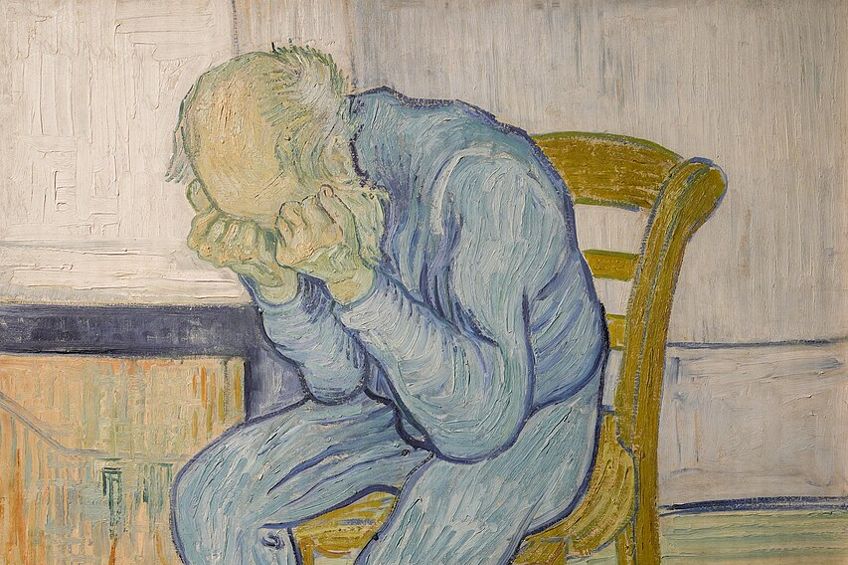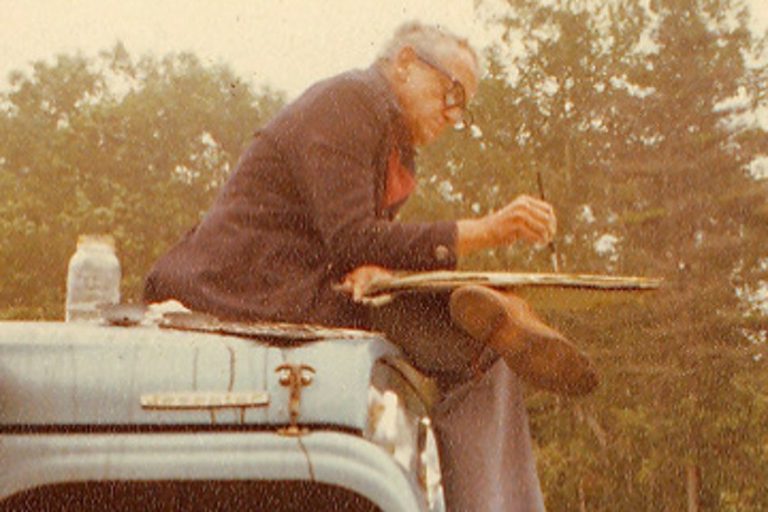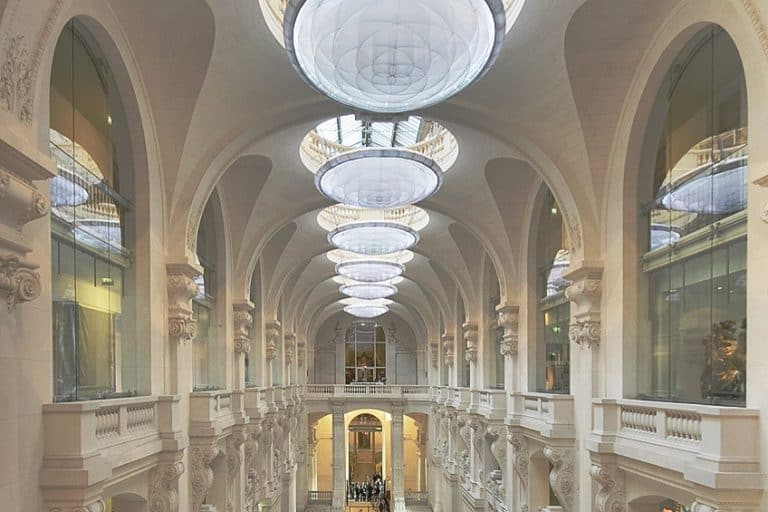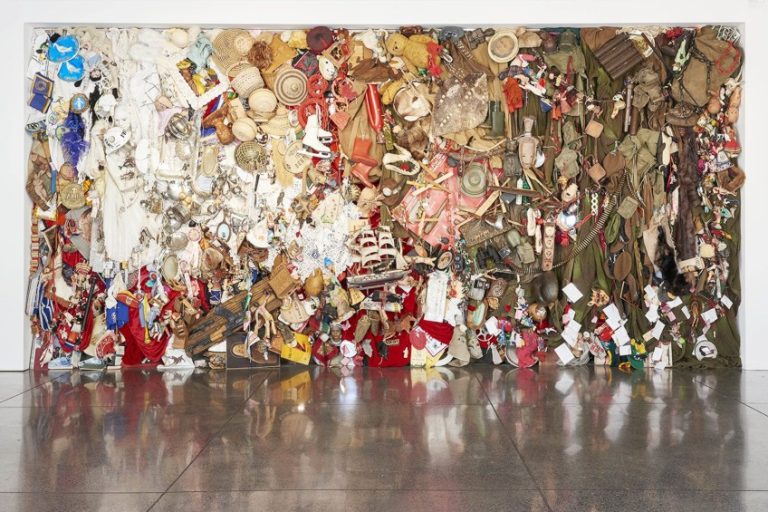Did Van Gogh Kill Himself? – The Mysterious End of the Artist
What happened to Vincent van Gogh, why did he die at such a young age, and did Van Gogh kill himself? The genius of Vincent van Gogh will never fully be understood since the globally renowned Dutch painter only achieved significant fame after he died in 1890. In this article, we will take you through all the details leading up to his death, including how he died and the potential factors that played into his tragic end. Keep reading to learn more about the unfortunate events surrounding the death of Vincent van Gogh.
The Death of Vincent van Gogh: How Did He Die?
In July 1890, the timid 37-year-old post-Impressionist painter Vincent van Gogh shot himself in the chest, causing him to sustain serious injuries, and led to his eventual death two days later. While there are a few theories concerning the nature of his death and the true cause of it, one fact remains; that Vincent van Gogh died from a fatal wound to the chest, inflicted by a revolver, and died two days after the incident. His death had since been ruled as a suicide. Below, we will review all the key details of the talented artist’s death, including the reasons why his death was found to be a suicide attempt, as well as contemporary theories proposed by medical experts, art students, and those whose internet sleuthing was sparked after watching the popular movie Loving Vincent in 2017.
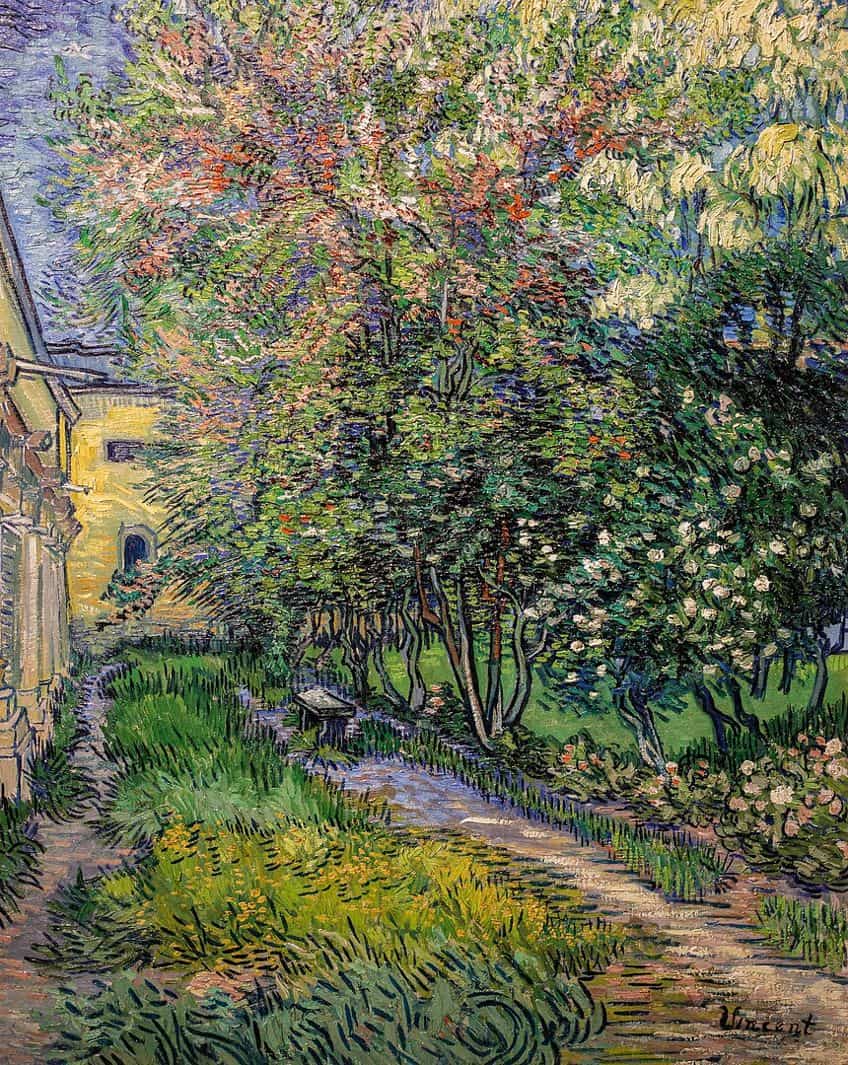
Battle With Mental Illness
The hit thriller-crime movie Loving Vincent was released in 2017 and has since attracted an audience of Van Gogh fans far and wide, in hopes of uniting to debunk the mysterious incident that took place two days before the artist’s death. It is important to note that the film was created with a fictional plot, meaning that it was not based on solid facts about his death. From forums like Reddit to skeptical medical experts, Van Gogh’s death, and the desire for the truth about his death have shaken communities and Van Gogh scholars to reassess the facts and circumstantial evidence.
According to the Van Gogh Museum site, Van Gogh was situated in a field near Auvers-sur-Oise, where he allegedly shot himself on 27 July 1890 with a revolver, however, failed to “kill himself” and was left with a serious injury.
His brother Theo was present at his bedside when Van Gogh passed away, two days later. There are many theories and scholars who attempt to explain the mental state of Van Gogh to justify his attempted suicide, however, the details around his injury also suggest potential homicide. “La tristesse durera toujours” is a statement made by Van Gogh in his bed and translates to “this sadness will never go away”, indicating the severe depression that the artist was struggling with.

As an artist who wished to express his individuality in a world that projected its prejudices onto him, followed by his ingestion of lead oil paints, Van Gogh perhaps had his reasons. Critical to the theory of his suicide is the point that Van Gogh did not leave behind a suicide note, instead, he sent for a large order of paint a few days before the incident and on the same morning that he died. He also sent a letter to Theo, expressing his optimism for the future.
Attempted Suicide and Death
So, what happened on 27 July 1890? At the time, Van Gogh was staying at the Ravoux Inn, where he gained the acquaintance of the innkeeper’s daughter Adeline Ravoux. At the age of 76, Ravoux recalled her experience of that day when she was 13 years of age. She stated that after breakfast, the artist left the inn. However, he did not return at the usual time he followed, so her family grew concerned. Van Gogh eventually returned after dark around nine but was seen holding his abdomen, which led to Ravoux’s mother checking on Van Gogh.
As he walked up the stairs to his room, he started to speak saying “No, but I have…” in a stifled tone.
Ravoux’s father was the one who heard Van Gogh’s painful groans and found the artist curled in his bed to discover that he had been wounded near his heart. According to the written account, Van Gogh confessed to setting out into the wheatfield to paint and attempting suicide in the night. Ravoux’s father alerted another artist Anton Hirschig at the inn to find a doctor, but he was unsuccessful so they called for Van Gogh’s physician, Gachet.
Of the most crucial points of reference from the artist himself were his letters to his brother, which suggest that he had been suffering from symptoms caused by plumbism and ingestion of lead. According to two Pullitzer-Prize-winning biographers Gregory White Smith and Steven Naifeh, the “suicide” of Van Gogh was reportedly not an attempt at ending his own life, but rather, it was a murder. The biographers suggested in their 2011 book Van Gogh: The Life that the artist was killed. They followed up with an article published in Vanity Fair, which went into further detail about their suspicions and later, revealed that it may have been a person named René Secrétan, who confessed to bullying Van Gogh and leading his own gang. Secrétan did not confess to shooting Van Gogh but stated that he used to brandish a pistol that was not working quite properly that he acquired from the keeper of the Ravoux Inn.

The biographers claim that days before Van Gogh died, he was hit by a stray bullet that pierced his abdomen but missed his vital organs. This caused him to suffer for the next 29 hours until he died. The doctor who treated Van Gogh often was Dr. Paul Gachet, who arrived at the inn to treat Van Gogh but left soon after assessing that Van Gogh was a lost cause. The statement that Van Gogh made to the gendarmes who questioned him the next morning stated “My body is mine and I am free to do what I want with it. Do not accuse anybody, it is I that wished to commit suicide”.
In his final hours, Van Gogh smoked and fell asleep occasionally while suffering from the pain. That Monday, a telegram was sent to Theo, who rushed to Van Gogh’s side and arrived in the afternoon. Ravoux stated that Theo and her father watched and stayed by the artist’s side until he fell into a coma and passed away around one-thirty in the morning. Theo recalled in his letter to their sister that Vincent wished to die and knew that his sadness would not leave.
In that way, Theo understood what his brother meant.
Van Gogh’s Funeral
Vincent van Gogh on his Deathbed (1890) is perhaps the closest one can get to experiencing what Van Gogh must have felt or looked like at the time of his death. The etching was created by Gachet, who was also an amateur artist himself, and captured the deceased Dutch artist at rest. The expression on his face may speak to the relief in his final hours and acceptance of his death. Émile Bernard’s correspondence to Albert Aurier provided researchers with many details about Van Gogh’s funeral, which took place on 30 July 1890.
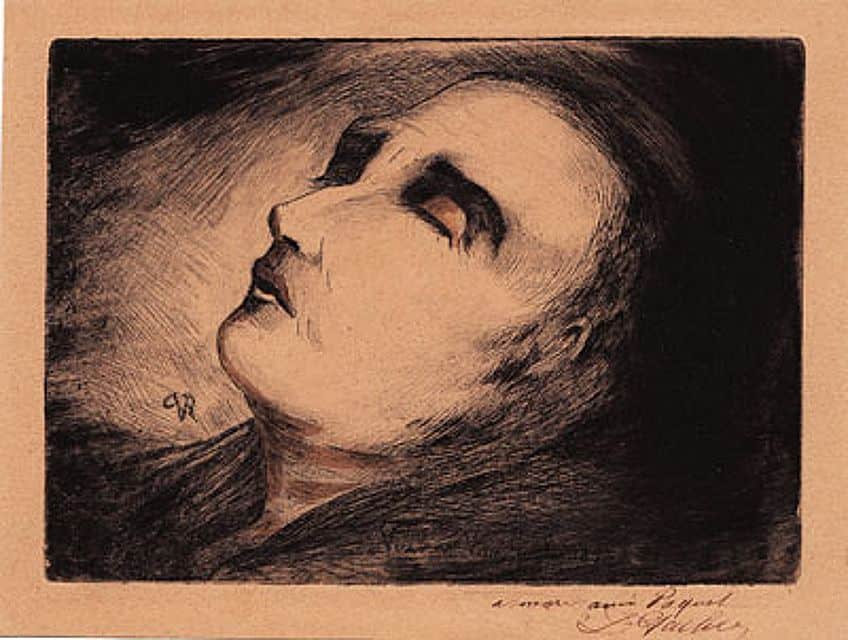
The finality of his death was amplified by the layout of his funeral, which saw his body rest among the painted canvases and yellow flowers, forming a halo around his body. His folding stool, easel, and paintbrushes were also placed in front of his coffin. By three, his viewing was over and his coffin was carried in the hot sun over a hill on the periphery of Auvers. Gachet praised Van Gogh at the funeral, stating that he was a great artist with only two missions in the world: art and humanity.
Van Gogh’s Letters
The most reliable source of information about the artist and his emotional landscape was the letters that he sent to his brother, sisters, and friends. Van Gogh wrote around 600 letters to Theo and kept 40 replies. He also communicated with his mentor and friend Anthon van Rappard, as well as Émile Bernard, Albert Aurier, Paul Signac, and Paul Gauguin. While in Arles, Van Gogh wrote around 200 letters in English, Dutch, and French. Among the most interesting names mentioned in Van Gogh’s letters was Jules Breton, whom Van Gogh also looked up to. In 1880, Van Gogh attempted to visit Breton in Courrières but found himself intimidated by Breton’s high walls, or perceived artistic success, and turned around.
Breton never knew of Van Gogh’s attempted visit nor was there any evidence that he corresponded with him.
Speculation and Theories About Van Gogh’s Death
So, what was the real truth behind Van Gogh’s death? According to Émile Bernard, Van Gogh shot himself shortly after leaving his easel to rest against a haystack. He believed that Van Gogh acted “with lucidity” and was deliberate in his actions. Even during the moment when Gachet told Van Gogh that he wanted to save his life, Van Gogh’s statement “then I’ll have to do it over again” showed the acceptance of his death coupled with the bleak perspective he carried with him.

Some scholars have speculated that Van Gogh was perhaps the easiest artist to label as “suicidal”, especially after his ear-cutting incident, which shocked many, including the woman who received his severed ear. This incident took place only two years before his death, accompanied by bouts of alcoholism, nervous breakdowns, and severe depression. His death was, therefore, easier to accept as a suicide and romanticized as a “troubled yet genius” artist.
American investigator Joe Nickell placed the theories of Smith and Naifeh into question after the two biographers requested the help of a handgun specialist to try to understand how Van Gogh might have shot himself. The specialist Vincent Di Maio analyzed the available contemporary evidence and found that Van Gogh might have held the revolver in an awkward position, which should have left him with burns on his hands and marks around his wound. In his opinion, he concluded that Van Gogh’s wound was not self-inflicted. However, Nickell challenged this by suggesting that Van Gogh was most likely unsure of whether or not he was going to pull the trigger.
These theories are only just theories until proven otherwise by definitive evidence.
Other theories that have circulated among communities who are engaged in the ongoing investigation of Van Gogh’s death speculate that he was indeed shot by a group of young boys and did not wish to get them in trouble, which would essentially mean ruining their lives. Van Gogh was also a missionary earlier in his life and was known to have a shy demeanor and timid personality.
There are still questions about where Van Gogh might have acquired a loaded revolver and whether his actions on 27 July were planned. Experts have little to study, except for accounts of his behavior and his letters, which indicate his struggle with depression. In 1889, he used a razor blade to cut off a portion of his earlobe while living in Arles. This event led to public fear, resulting in a petition to have the artist removed. Van Gogh was admitted to a hospital but he refused to leave on the day of his discharge, which also coincided with his brother’s wedding, and chose to seek help by admitting himself into an asylum.
Van Gogh’s Life Before 27 July 1890
Van Gogh wished to take refuge in an asylum near Saint-Rémy, which was a point of concern for Theo since he tried to talk his brother out of it and tried to convince him to move to Pont Aven to join Paul Gauguin. Van Gogh was adamant and Theo eventually agreed to pay for his stay, requesting the cheapest room. In May 1899, Van Gogh moved into the asylum, where he was able to indulge in his art practice. During this time, he experimented with Impressionist methods and created some of his most famous paintings.
By the end of July, and after a recent visit to Arles, Van Gogh relapsed for another month. His recovery was steady but he was met with another relapse by the end of December in 1889.
He continued to paint and made a trip to Arles once again to deliver a portrait to Madame Ginoux in January 1890, where he suffered from an acute relapse. It was clear at this point that Van Gogh’s depression was worsening. Between January and March, Van Gogh was emotionally paralyzed and described by Jan Hulsker as the artist’s saddest period. In May, Van Gogh was discharged, which one might speculate was a counter-intuitive action given that Van Gogh’s condition seemed to be reaching its limits.

Of important note from this time is the last painting Van Gogh created at the asylum, entitled At Eternity’s Gate (1890), also known as Sorrowing Old Man. The man in the painting appears to be immersed in his own grief, which makes one question whether it was at this point that Van Gogh knew of his outcome. At Eternity’s Gate also inspired the 2018 film, which was titled after the painting and dramatically captured the final days of Van Gogh’s life, played by Willem Dafoe. The painting suggests the deep despair that Van Gogh experienced in his bouts of severe depression, which is relatable to many, and yet tragic in retrospect. Van Gogh visited Theo and his wife in Paris after his discharge and moved to Auvers-sur-Oise and once described his stay at the asylum as overwhelming, such that his surroundings began to weigh down on him, worsening his state.
When Van Gogh arrived in Auvers, his health was already on the decline, and wrote to his brother about his suffering, describing how his days seemed more like weeks. By the end of May, he wrote again to his mother, stating that his symptoms had disappeared. His letters to Theo and his sister Wilhelmina in June also indicated a consistency in the message, that his health was improving, and that he was not bothered by his nightmares anymore. Given that Van Gogh was aware of the support of his brother and the possible financial strain that he had taken, it is also a possibility that he did not want to worry his family and mentally resigned himself to his condition.
One might even speculate that his reports of his health improving were falsified to lessen the concern and ease his mind of not wanting to bother others with his troubles.
Another red flag pointing to Van Gogh’s state was an unsent letter intended for Gauguin, which described his aspirations and hopes for creating a painting of varied green hues in the future. In July, Van Gogh also stated openly in a letter to Theo that he was trying to do as well as he could and that he could hardly dare count on always being in good health. The last line stated, “If my disease returned, you would forgive me. I still love art and life very much”. Eight days later, his letter to Theo then showed his criticism of Dr. Gachet, such that Van Gogh believed that Gachet was sicker than himself and his condition only worsened due to the influences of other patients. He ended the letter stating that “we all need rest” and “I feel like a failure”, with finality and a dark conclusion of “I see no happy future at all.”
The Posthumous Legacy of Vincent van Gogh
The messages written to Theo were evident that Van Gogh was attempting to inform his brother of his mental state and almost sounded like a cry for help. The contrast in his emotions and his descriptions of his state in letters to his mother and sister, as opposed to Theo, demonstrated concerning factors. From finding that his life was “threatened at its very root” to stating that he was “in a mood of almost too much calm”, and escaping to the serene countryside, there were many indicators of Van Gogh’s depressive state and inability to regulate his emotions or sustain them.

In a letter written to Van Gogh by Theo on 22 July, Theo expressed his concern and suggested Van Gogh consult Gachet. Of interesting note is Van Gogh’s response on 23 July, describing the work he produced after his brother showed concern for not only his health but his lack of art too. One will also notice how Theo overlooked his brother’s untrusting attitude toward Gachet in their recent correspondence. It was clear that Van Gogh was potentially lonely at the inn and without much emotional support from anyone, given the distance between his brother and isolation from his friends. The conditions for a tragedy were abundant.
Van Gogh created more than 70 artworks at Auvers (1890), including famous paintings like Tree Roots and Trunks, Wheatfield with Crows, Portrait of Dr Gachet, and an incomplete painting titled Thatched Cottages by a Hill, created in July 1890. Sadly, it was only after Van Gogh’s death that his work gained the recognition it deserved, with works like Starry Night (1889) becoming his most famous painting and Orchard with Cypresses (1888) selling for $117.2 million. If Van Gogh could live to see his legacy, he might have found comfort in knowing that he would become one of the world’s most loved artists.
The death of Vincent van Gogh continues to generate countless theories, with some even advocating for an autopsy to find additional evidence to prove his suicide to be false. Perhaps, with time, more answers will emerge, but for now, one can find comfort in the many beautiful works of art that survive Vincent van Gogh.
Frequently Asked Questions
Did Van Gogh Kill Himself?
Vincent van Gogh is believed to have shot himself in a field near Auvers, France on 27 July 1890. He died two days later from the suicide attempt and his death was identified as a suicide. The Dutch artist’s death remains a topic of debate, since many scholars and Van Gogh followers believe that his death was suspicious and was rather a murder.
Why Did Van Gogh Kill Himself?
Among the theories surrounding why Vincent van Gogh might have attempted suicide was due to his struggle with severe depression and mental illness, which saw the artist experience many breakdowns and bouts of intense sadness in the months leading up to his death. There is also speculation that he did not wish to be a burden to his brother any longer and thought of himself to be a failure.
How Did Van Gogh Kill Himself?
On 27 July 1890, Vincent van Gogh went out into a field close to Auvers to paint, when he reportedly attempted suicide by shooting himself with a revolver. While his injury was critical, he still managed to walk back to his inn, where he endured the pain of the wound and its impact for two days. He died on 29 July 1890 at around one-thirty in the morning.
Jordan Anthony is a film photographer, curator, and arts writer based in Cape Town, South Africa. Anthony schooled in Durban and graduated from the University of the Witwatersrand, Johannesburg, with a Bachelor of Art in Fine Arts. During her studies, she explored additional electives in archaeology and psychology, while focusing on themes such as healing, identity, dreams, and intuitive creation in her Contemporary art practice. She has since worked and collaborated with various professionals in the local art industry, including the KZNSA Gallery in Durban (with Strauss & Co.), Turbine Art Fair (via overheard in the gallery), and the Wits Art Museum.
Anthony’s interests include subjects and themes related to philosophy, memory, and esotericism. Her personal photography archive traces her exploration of film through abstract manipulations of color, portraiture, candid photography, and urban landscapes. Her favorite art movements include Surrealism and Fluxus, as well as art produced by ancient civilizations. Anthony’s earliest encounters with art began in childhood with a book on Salvador Dalí and imagery from old recipe books, medical books, and religious literature. She also enjoys the allure of found objects, brown noise, and constellations.
Learn more about Jordan Anthony and the Art in Context Team.
Cite this Article
Jordan, Anthony, “Did Van Gogh Kill Himself? – The Mysterious End of the Artist.” Art in Context. February 13, 2024. URL: https://artincontext.org/did-van-gogh-kill-himself/
Anthony, J. (2024, 13 February). Did Van Gogh Kill Himself? – The Mysterious End of the Artist. Art in Context. https://artincontext.org/did-van-gogh-kill-himself/
Anthony, Jordan. “Did Van Gogh Kill Himself? – The Mysterious End of the Artist.” Art in Context, February 13, 2024. https://artincontext.org/did-van-gogh-kill-himself/.


